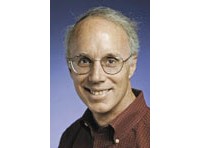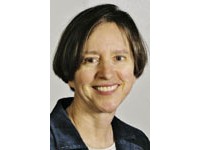Advertisement
Grab your lab coat. Let's get started
Welcome!
Welcome!
Create an account below to get 6 C&EN articles per month, receive newsletters and more - all free.
It seems this is your first time logging in online. Please enter the following information to continue.
As an ACS member you automatically get access to this site. All we need is few more details to create your reading experience.
Not you? Sign in with a different account.
Not you? Sign in with a different account.
ERROR 1
ERROR 1
ERROR 2
ERROR 2
ERROR 2
ERROR 2
ERROR 2
Password and Confirm password must match.
If you have an ACS member number, please enter it here so we can link this account to your membership. (optional)
ERROR 2
ACS values your privacy. By submitting your information, you are gaining access to C&EN and subscribing to our weekly newsletter. We use the information you provide to make your reading experience better, and we will never sell your data to third party members.
Materials
Gabor A. Somorjai Award For Creative Research In Catalysis
Recipients are honored for contributions of major significance to chemistry
by Mitch Jacoby
January 26, 2009
| A version of this story appeared in
Volume 87, Issue 4
Sponsored by the Gabor A. & Judith K. Somorjai Endowment Fund
Nowadays, catalysis and surface chemistry studies often include computational analysis. This theoretical aspect of modern research is so ubiquitous that the scientific developments that have made it so common are easy to overlook. Fortunately for Jens K. Nørskov, a pioneer in computational surface (or heterogeneous) catalysis and a physics professor at the Technical University of Denmark (DTU), experts in the field recognize his seminal contributions.
"Nørskov is the world leader in the development of a quantitative theory of surface reactivity and heterogeneous catalysis," Mark A. Barteau says unequivocally. Barteau, a professor of chemical engineering at the University of Delaware, explains that Nørskov's work has provided detailed insight into a large number of surface-catalyzed processes, "culminating in both the demonstration of new catalysts and the development of new concepts."
Alexis T. Bell, a professor of chemical engineering at the University of California, Berkeley, expresses a similar view. "What I admire most and consider to be the distinguishing feature of Nørskov's work is his ability to use theoretical methods to not only explain available experimental observations but also to predict the effects of changes in catalyst composition and structure."
One of Nørskov's key developments is a theoretical model that links adsorption energies and activation barriers for elementary steps in surface reactions to the energies of d electrons in catalytic transition-metal surfaces. The model enables electronic variations between metals, as well as the effects of alloying, structural defects, and other properties, to be addressed within a single theoretical framework.
In several cases, Nørskov's theoretical predictions guided development of new and improved catalysts. For example, his investigation of the effects of alloying led to new methanation (CO hydrogenation) catalysts. And his prediction that adding gold to a Ni-based steam-reforming catalyst would increase the catalyst's resistance to carbon poisoning was confirmed experimentally. The new catalyst significantly outlives the original one.
Other examples of Nørskov's theoretical work leading to experimental advances include catalysts for ammonia synthesis and low-temperature fuel-cell anode catalysts that exhibit enhanced tolerance to CO poisoning.
Nørskov, 56, completed master's degrees in chemistry and physics at Aarhus University, in Denmark, in 1976, and earned a Ph.D. degree there in theoretical physics in 1979. He then served as a research fellow, postdoctoral associate, and staff scientist at various institutions, including IBM's Thomas J. Watson Research Center, in Yorktown Heights, N.Y., and Danish catalyst manufacturer Haldor Topsøe.
In 1987, Nørskov began serving as a research professor at DTU and was named professor of theoretical physics there in 1992. Since 1993, Nørskov has directed DTU's Center for Atomic-Scale Materials Physics, and he has served as chairman of the Danish Center for Scientific Computing since 2001.
Nørskov has received numerous awards and honors, most recently the University of Chicago's Mulliken Medal and an honorary doctorate from Eindhoven University of Technology, in the Netherlands. He is a member of the Royal Danish Academy of Sciences & Letters and a fellow of the American Physical Society. He has served on the editorial boards of several scholarly journals dedicated to catalysis, surface science, and related topics, and he has published some 350 papers in scholarly journals. To date, Nørskov has mentored roughly 90 Ph.D. students and postdocs.
Nørskov will present the award address before the Division of Physical Chemistry.





Join the conversation
Contact the reporter
Submit a Letter to the Editor for publication
Engage with us on Twitter